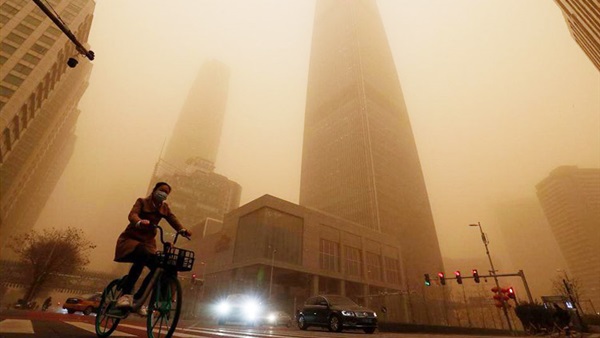Flights canceled during China’s worst sandstorm in a decade

China’s capital and a wide swath of the country’s north were enveloped Monday in the worst sandstorm in a decade, forcing the cancelation of hundreds of flights.
Skyscrapers
in the center of Beijing appeared to drop from sight amid the dust and sand.
Traffic was snarled and more than 400 flights out of the capital’s two main
airports were canceled amid high winds and low visibility.
The
National Meteorological Center said Monday’s storm had developed in the Gobi
Desert in the Inner Mongolia Region, where schools had been advised to close
and bus service added to reduce residents’ exposure to the harsh conditions.
Such
storms used to occur regularly in the springtime as sand from western deserts
blew eastwards, affecting areas as far as northern Japan.
Massive planting of trees and bushes in fragile areas has reduced the intensity of storms in recent years, but the expansion of cities and industries, along with strip mining and overgrazing, has put constant pressure on the environment throughout China. With its mix of desert and grassy steppe, Inner Mongolia is particularly prone to extreme weather resulting from resource exploitation.
The
National Meteorological Center forecasted the sand and dust would affect 12
provinces and regions from Xinjiang in the far northwest to Heilongjiang in the
northeast and the eastern coastal port city of Tianjin.
“This is the most intense sandstorm weather our country
has seen in 10 years, as well as it covering the broadest area,” the center
said in a post on its website.
It
wasn’t clear if the storm was related to a recent general decline in air
quality despite efforts to end Beijing’s choking smog.
The
ruling Communist Party has pledged to reduce carbon emissions per unit of
economic output by 18% over the next five years. Environmentalists say China
needs to do more to reduce dependency on coal that has made it the world’s
biggest emitter of climate changing gasses.







